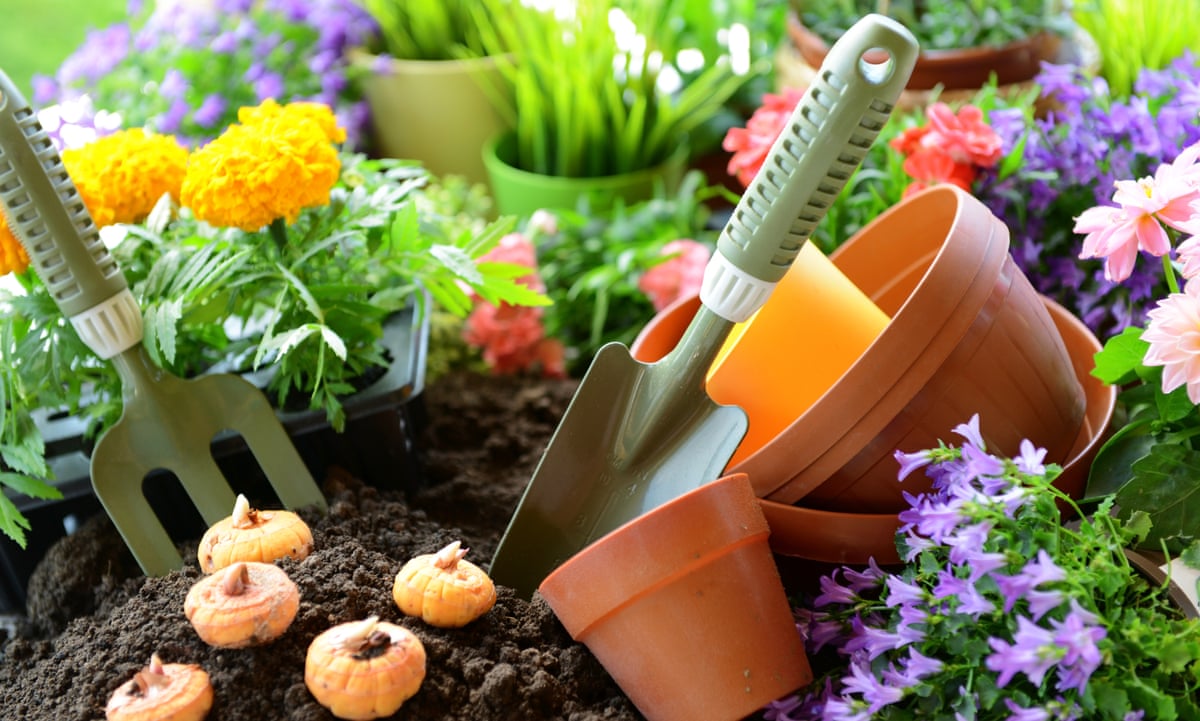Rooted in Understanding: The Ultimate Guide to Newbie Gardening Success
Wiki Article
From Newbie to Green Thumb: A Step-by-Step Trip Through the Art of Gardening

Comprehending Your Gardening Area
To begin your gardening trip, it is vital to understand the special features and restrictions of your horticulture space. Take a minute to observe your environments. Is your space tiny or large? Is it exposed to complete sun or does it obtain partial shade? Exist any details difficulties you may face, such as bad soil high quality or minimal water accessibility? Understanding these variables will help you make notified decisions regarding the kinds of plants that will grow in your space.Consider the size of your horticulture location. If you have a small area, you might require to concentrate on container gardening or vertical gardening to maximize your expanding location. On the various other hand, if you have a huge room, you have the luxury of planting a variety of plants and producing different zones within your yard.
Next, examine the quantity of sunlight your space receives. This will certainly figure out which plants will certainly prosper and which ones may struggle. If your space is shaded, you can select shade-loving plants like ferns or hostas. If your room obtains complete sunlight, you can expand a large array of plants, including natural herbs, blossoms, and veggies.
Lastly, think about any type of restrictions or challenges particular to your space. You may require to change it with compost or pick plants that are tolerant of less-than-ideal conditions if your dirt quality is poor. If water is limited, you can choose drought-tolerant plants or implement water-saving methods like mulching.
Selecting the Right Plants for Your Yard
Select plants that are appropriate to your yard's unique problems and your personal choices. When picking plants for your garden, it is crucial to consider variables such as sunshine, dirt kind, and climate. Some plants favor well-drained soil, while others flourish in damp or clay-like dirt.An additional important aspect to think about is your personal preference. Do you favor a yard loaded with colorful blossoms, or are you a lot more interested in expanding natural herbs and veggies? Consider the purpose you desire your yard to offer and the visual you desire to achieve. It's also worth thinking about the upkeep degree of the plants you select. Some plants need even more care and attention, while others are extra low-maintenance.
Preparing the Soil for Planting
First, analyze the condition of your soil to determine if any type of enhancements or amendments are required. The quality of your dirt is crucial for the success of your garden. Begin by inspecting the structure of the soil. Is it sandy, fertile, or clayey? Sandy dirt drains rapidly, while clayey soil retains water. Fertile soil is the optimal balance in between both. Next, check the pH degree of your dirt. Many plants choose a slightly acidic to neutral pH, around 6.0 to 7.0. You may need to readjust it utilizing dirt changes such as lime or sulfur if your soil is also acidic or alkaline. Furthermore, you should take into consideration the nutrition content of your dirt. If any type of important nutrients are doing not have, Conduct a soil examination to figure out. This will aid you choose which plant foods or organic this article issue to add. Ensure that your dirt is well-draining. Poorly drained dirt can result in waterlogged roots and various other plant health and wellness problems. Boost drain by including natural matter like compost or this contact form peat moss if needed. By evaluating and making needed amendments to your soil, you can develop an optimal atmosphere for your plants to prosper.Nurturing and Keeping Your Garden
Once you have prepared the soil, it's time to obtain your hands unclean and begin nurturing and maintaining your yard. The secret to an effective yard is consistent care and interest. Watering is crucial, especially during dry spells. Ensure to water your plants deeply, enabling the water to permeate the dirt and reach the roots. Normal weeding is additionally important to keep your yard without unwanted plants that compete for nutrients and room. Draw out any kind of weeds, taking care to eliminate their roots to avoid them from coming back. Additionally, it's vital to supply correct nutrition for your plants. Consider utilizing organic fertilizers or garden compost to improve the dirt and promote healthy development. Trimming is one more essential job to maintain your garden looking cool and urge far better airflow and sunlight penetration. Trim off any kind of dead or broken branches to preserve the general health of your plants. Finally, watch for parasites and illness. Regularly evaluate your plants for any type of signs of problem or health problem and take immediate activity to stop additional damage. By adhering to these nurturing and upkeep practices, you will certainly guarantee a thriving and gorgeous garden.Troubleshooting Common Gardening Issues
If you notice chewed fallen leaves or plants that are shriveling for no noticeable factor, you might have a pest problem. If your plants have yellow or discolored fallen leaves, they may not be obtaining enough nutrients. Remove influenced plants and treat the continuing to be ones with organic fungicides or pesticides.Final Thought
By understanding your horticulture area, picking the right plants, preparing the dirt, and supporting your garden, you have actually gotten basics rid of common horticulture concerns like a pro. Currently, equipped with knowledge and experience, you are ready to delight in the beauty and wealth of your growing garden.
When choosing plants for your yard, it is crucial to think about elements such as sunshine, dirt kind, and environment. Some plants favor well-drained dirt, while others prosper in damp or clay-like dirt (newbie gardening). By recognizing your gardening space, selecting the right plants, preparing the soil, and supporting your garden, you have actually conquered usual gardening concerns like a pro
Report this wiki page